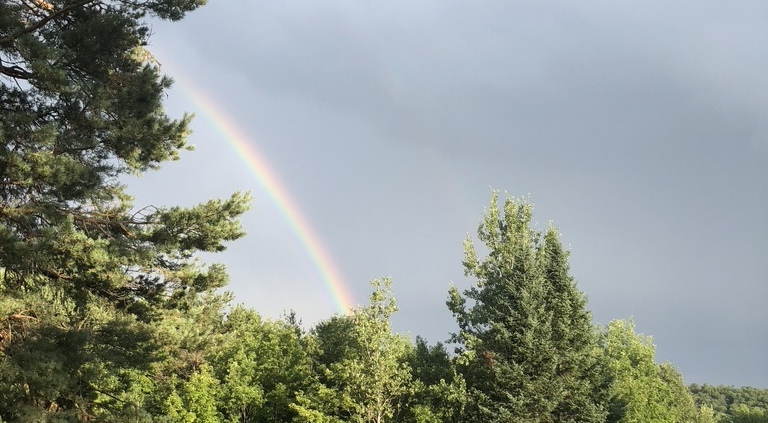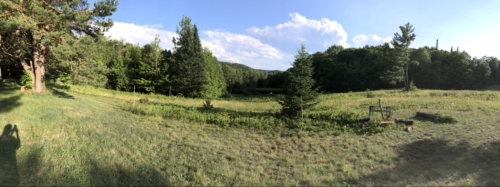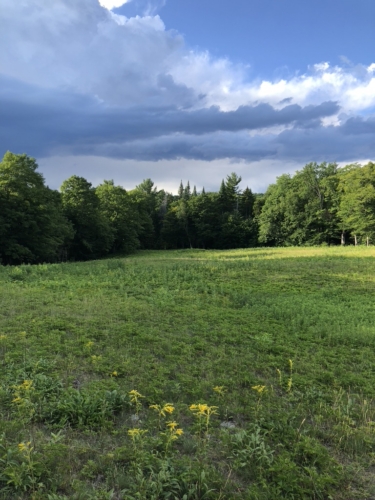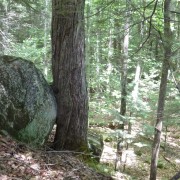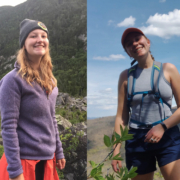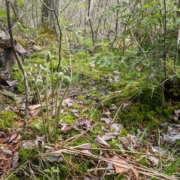“This Land Belongs to Vermont, not the Andruses”
The 140 acre Andrus property in Strafford is mostly forest land grown up from agricultural abandonment. While the property is mostly forested, little forestry activity has occurred there in recent decades. In addition to northern hardwood, a striking feature of the property is a unique stand of planted Scots pine, white pine, and apple trees. Primarily, the forest has been lightly managed for wildlife habitat, protection of water resources, and protecting historical and cultural features. While there are two open fields on the property, they are managed only through bi-annual mowing to promote wildlife habitat and food sources. Mostly – the Andrus property is wild.
Cynthia Andrus has owned this property since 1969 when she and her late husband, Wayne Andrus, purchased the land. Her family used the property for tent camping until the mid-1970’s when they built a small cabin that is still serviced only by an outhouse and water that is hand-pumped from a nearby well.
The family spent years coming to the remote Vermont property – enjoying the rural landscape through camping and cross country skiing, seeing bear and moose cross the property, picking wild strawberries, and watching storms roll in over the back fields and high pastures. Three generations of the Andrus family have been able to enjoy this jewel of a property.
In addition to the fields and forests of the property, there is a small wetland near the pond, which was built in the 1970’s and stocked with 92 brook trout provided by the state of Vermont. A small population of trout remain to this day. Two brooks run through the property, one towards the northwestern corner and one along the southeastern boundary. Both of these brooks serve as tributaries to the West Branch of the Ompompanoosuc River.
Despite suggestions from friends and neighbors to install a gate for the property, the family said “no, it belongs to Vermont, not the Andrus.” With that same ethos, Cynthia and her children wanted to ensure that this land would remain free from any further development and so they worked with UVLT to donate a conservation easement on the property and protect it forever.

